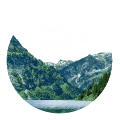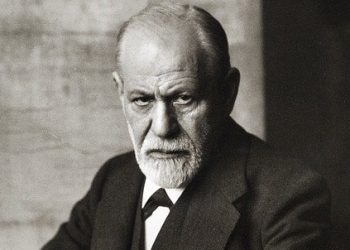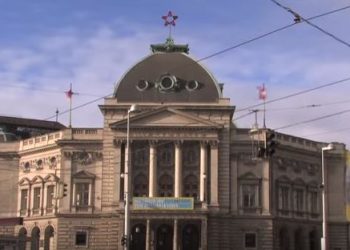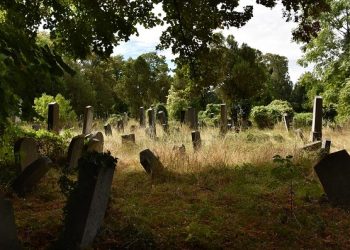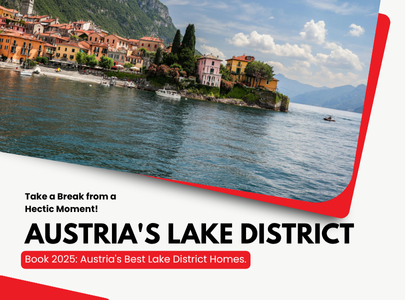In this article, we will detail the wonderful church, the large square, and the variety of attractions that surround it.
- St. Charles Church (Karlskirche)
- Karlsplatz Square
- Attractions Around the Square
St. Charles Church
St. Charles Church (Karlskirche), or its full name Rektoratskirche St. Karl Borromäu, is located in the southern part of Karlsplatz, about 200 meters outside the Old City and the Ringstrasse. It is an ancient church built by order of Emperor Charles VI after the Black Death plague struck the city. The church was built in a unique style that combines ancient Greek and Roman elements with Baroque and Renaissance styles. This church is considered one of the most important churches in the city and is undoubtedly one of the most spectacular buildings in Vienna. It is highly recommended to visit the site when touring the city (you don’t have to go inside; you can enjoy the external beauty of the church and the park that surrounds it).
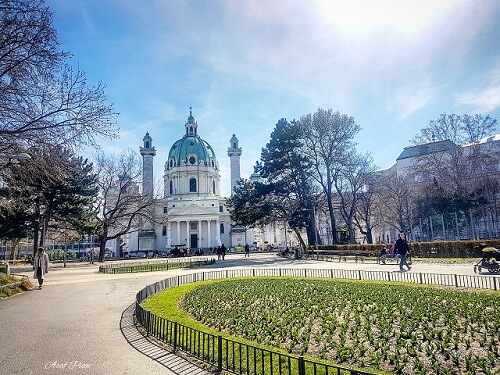
The Story of the Church
At the beginning of the 18th century, a terrible plague broke out in Vienna, causing the mass death of many of the city’s residents. Emperor Charles VI, ruler of the Holy Roman Empire, was at a loss and therefore vowed that if the plague passed, he would dedicate a magnificent church building to St. Charles Borromeo, who was known as the savior of plague sufferers and also as the patron saint of the emperor himself. In 1713, a year after the plague had passed, the emperor announced the construction of the church as he had vowed. A competition was held among many architects for its construction, and the happy winner was the architect Johann Bernhard Fischer von Erlach. The construction work began in 1716 and lasted for 23 years. During the construction, von Erlach passed away, and his son Joseph Emanuel continued the work until its completion in 1739. In the past, it was possible to see the Hofburg Palace directly from the church, but today the many buildings that have been added around the square no longer allow this.
The Design of the Church
The architect von Erlach was greatly influenced by the Baroque style combined with ancient elements from Roman and Greek palaces. He designed the front part of the building, the portico, in the style of an ancient Greek temple with a triangular roof and decorated support columns reminiscent of the Greek Pantheon. On the sides of the central hall, there are two tall columns, magnificent replicas of Trajan’s Column built in Rome. On the tall columns, there are many reliefs created by the Italian sculptor Lorenzo Mattielli depicting anecdotes from the life of St. Charles Borromeo. The dome of the church is somewhat reminiscent of the dome of St. Peter’s Church located in the Old City of Vienna.
The interior of the church is also spectacular and is decorated with gleaming marble columns, wonderful statues, and of course, the golden sun that serves as a memorial to the terrible plague. Around the golden sun, there are statues depicting the life of St. Charles. It is interesting to see that in its center, the name of God is written in Hebrew: “Y.H.W.H”.
In the plaza outside the church, there is a pool of water with a wonderful statue in its center, sculpted by Henry Moore. On beautiful sunny days, the church is wonderfully reflected in the waters of the pool, creating a breathtakingly beautiful sight.
Watch a short video showing the church at sunset on a sunny day:
Antonio Vivaldi and Classical Music Performances in the Church
Next to the church was a burial ground called Spitaler Gottesacker, where the famous composer Antonio Vivaldi was buried. In his memory, concerts featuring his music are regularly held in the church, in addition to other concerts by important Austrian artists such as Mozart. You can attend classical music performances of Vivaldi’s works. The regularly held performance is called Vivaldi’s Four Seasons. Click to check for available seats and book tickets for the classical music performance held at St. Charles Church.
Visiting St. Charles Church
There is an entrance fee to enter the church. Inside the church, besides the spectacular design, there is an elevator to a viewing area at a height of 32.5 meters. From there, you can see the ceiling decorations up close and be truly impressed by the beauty of the church.
Essential Information for Visiting the Church
Operating Hours:
- Monday – Saturday: 9:00 AM to 6:00 PM
- Sundays and holidays: 11:00 AM to 7:00 PM
Prices:
- Adult – €9.50
- Children from age 11 – €5
- Student – €6
- Children under 10 – Free
- Group of 6 or more – €8.50 per person.
The entrance ticket includes: a model of the church, a balcony with a panoramic view, the treasury, and the organ room.
You can also experience the church as part of a musical performance – Vivaldi’s Four Seasons, which takes place almost every evening. For more information and to purchase tickets.
How to get to St. Charles Church by public transport?
The church is located next to the Karlsplatz underground station. You can reach it using lines U1 (the red line), U2 (the purple line), and U4 (the green line). You should exit the station at the exit marked Resselpark and from there walk for about 5 minutes through the park until you reach the church.
Address: Karlsplatz, 1040 Wien
Map:
Karlsplatz Square
This square is one of the most central in Vienna, and from it, you can reach all the most important places in the city. Karlsplatz is located on the border between the first district (the Old City) and the fourth district. Before the square was built, the Wien River flowed here, and over it was an impressive bridge called the Elizabeth Bridge (named after the Emperor’s wife). At the end of the 19th century, the river’s flow in this section was stopped, the water channel was covered, and a large street was built on top of it. This led to the demolition of the ancient bridge.
In the years between the world wars, the square was mainly occupied by temporary structures, such as a shopping center (where the Wien Museum is now located).
Today, a large part of the square is called Resselpark, named after Josef Ressel who designed it. At the eastern end of the park is the church, and to its west is the Vienna University of Technology building. Throughout the park, small statues are scattered in memory of famous people from Austrian history, such as the inventor Siegfried Marcus, Josef Madersperger, and the composer Johannes Brahms.
The square itself is an important transportation artery in the city, served by three underground lines (U1, U2, U4) and a large number of trams. The train that goes towards Vienna’s southern shopping city (SCS) also departs from Karlsplatz.
Since 2010, a festival called Popfest has been held in Resselpark, featuring food stalls, drinks, and live music. Information about the festival.
8 Attractions Around Karlsplatz Square
The large Karlsplatz is surrounded by a variety of important and interesting attractions besides the wonderful church. Also, due to its proximity to the Old City, you can walk via Operngasse, which eventually leads to St. Stephen’s Cathedral or the Hofburg Palace.
Other important places around the square are:
- State Opera House: One of the leading opera houses, and the variety of works and plays performed in it is the largest in the world. The original building was built in the mid-19th century, but the bombings of World War II destroyed large parts of it. After extensive restoration and reconstruction work, the building was restored to its former glory. The opera house holds about 350 performances each season, and about 600,000 spectators come to enjoy Viennese culture at its best. If you feel like soaking up some local culture, the opera house is undoubtedly the perfect place. You can even buy a ticket for an opera performance for 2 to 4 euros (for standing room). Another option is to watch the performances live through the opera house’s broadcasting system. In addition to all this, there are daily guided tours for visitors. It is located right next to the underground station. For more extensive information on the State Opera.
- Wien Museum (Vienna City Museum): This museum deals with the history of the city of Vienna (as you might have guessed). Its permanent exhibition includes collections from the various historical periods in which there was an active settlement in the city area. The collections display objects from the Neolithic period to the mid-20th century. The focus of the exhibition is mainly the 19th century, and as part of the exhibits related to this period, there are also paintings and works of art by the famous Gustav Klimt and Egon Schiele.
- Opening Hours: Open every day (except Mondays) from 9:00 AM to 6:00 PM. On Thursdays, open until 9:00 PM.
- Prices: Free admission.
- Official Website
- Address: Karlsplatz 8, 1040 Wien
- Wiener Musikverein (Concert Hall): The Musikverein began operating in 1863 and serves the Vienna Philharmonic Orchestra. This is the best place to enjoy classical music and experience Viennese culture in an authentic way. The concert hall inside the building is considered one of the best in the world. The building is about a 3-minute walk from the square. You can read more information in our detailed article on the Musikverein.
- Address: Musikvereinsplatz 1, 1010 Wien
- Secession Building (Secessionsgebäude): Secession was an artistic movement belonging to the Art Nouveau and Jugendstil movements. The movement was founded in 1897 in Vienna. The aspiration of the artists in the movement was to create unique art that was disconnected from the classical motifs of art and from the principles of the Austrian Academy of Arts. The first president of the movement was the famous painter Gustav Klimt. In the year the movement was founded, the Secession Building was also erected, designed by the architect Joseph Maria Olbrich. It is easy to identify the building located at the end of the market near the Karlsplatz station because of the golden dome that adorns it. The building displays art objects and works related to the Secession movement, the most famous of which is Klimt’s painting called the Beethoven Frieze. The building is about a 7-minute walk from the square.
- Address: Friedrichstraße 12, 1010 Wien
- Naschmarkt: The largest and most touristy market in Vienna. Along one kilometer, there are about 158 restaurants and stalls selling fruits, vegetables, food, drinks, and clothes. You can find special and fresh fruits and vegetables in the market, as well as some stalls of traditional Austrian food alongside a culinary abundance from all over the world. On Saturdays, a large flea market is held next to the Naschmarkt, where second-hand goods and antiques are sold. The market is about a 10-minute walk from the square. For more extensive information on the market.
- Albertina: The wonderful art museum of Vienna and one of the most important art museums in the world. The museum has exhibitions of paintings from ancient periods. The exhibits in the museum belonged to the personal collection of Prince Albert, who was the husband of Maria Christina (the daughter of Maria Theresa). The museum is about a 10-minute walk from the square. You can read more extensive information on the Albertina in our comprehensive article.
- Hotel Sacher: The famous hotel and Café Gerstner are a short walk from the square. In the café of the magnificent Hotel Sacher, you can eat a Viennese chocolate cake which is actually called Sachertorte. This is a popular tourist attraction. It is worth remembering that the cake can be bought at a more reasonable price anywhere else in Vienna. The hotel is about a 7-minute walk from the square.
- Café Gerstner (Gerstner K. u. K. Hofzuckerbäcker): This is a classic Viennese café with a stunning design, especially on its upper floor, which is decorated with wonderful murals. The service is good, and the coffee and cake are delicious. The café is about a 5-minute walk from the square.
If you plan to continue exploring the Old City, read about the center of Vienna and up to 17 recommended attractions in this area.

